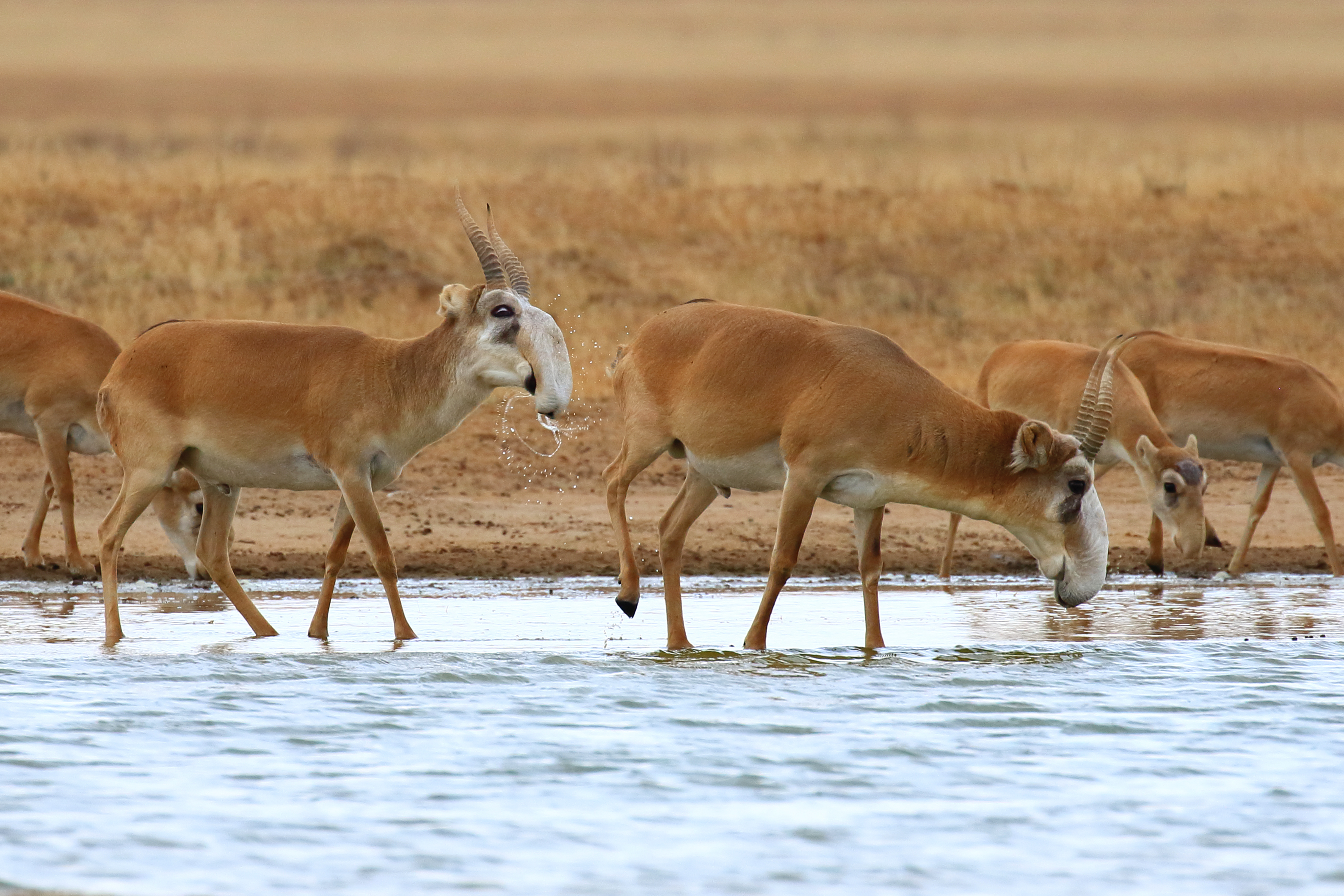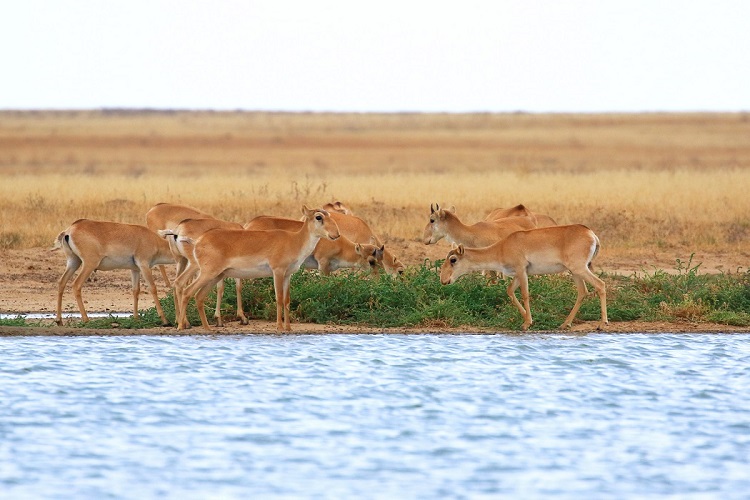Andrey Gilev and Karina Karenina have just got back from the Stepnoi Sanctuary in Russia, where they were continuing their work into the significance of artesian wells for saigas.

The role of water sources of different types, including artesian wells, in the life history of the saiga is quite well known. They are particularly important during the species’ most vulnerable period of calving, and for juveniles when the vegetation begins to dry out in the long, hot summer.
Artesian lakes as a source of water and minerals.
 Andrey and Karina noticed that some animals did not always drink from the water, but practically every adult saiga spent up to 40 minutes eating the soil around the lake.
Andrey and Karina noticed that some animals did not always drink from the water, but practically every adult saiga spent up to 40 minutes eating the soil around the lake.
This behaviour is not uncommon and is in fact a quite natural behaviour of many birds and mammals who eat clay soil, as it is a natural source of minerals and has the ability to neutralise toxins and regulate intestinal fora.
Eating soil which is rich in minerals is especially important for females during the calving period.
The significance of artesian lakes for socialization and rest
The large, vegetation-free areas of fat land around the lake served as a place for active social interaction by saigas. A common type of interaction was jousts between young males. These were short, and characterised by frequent changes of partner. The males did not hurt each other, as this kind of practice jousting is necessary for future success in rutting.

Occasionally, they noted that female saigas showed friendly behaviour toward each other, rubbing their muzzles against another female’s head. Usually these contacts were between two females who had come to the lake together. When females came with their calves, the calves often played together. More often than not the play was between siblings, but sometimes calves from different females formed temporary groups to play together. In addition, calves regularly entered into social interactions with adults, including males.
The area near the lake serves as a safe place for the socialisation of young animals. Due to good visibility, calves can move away from their mothers still staying within their eyeline.
It is likely that the open spaces around the artesian lake provide good visibility and, thus, a safe environment for resting. 
